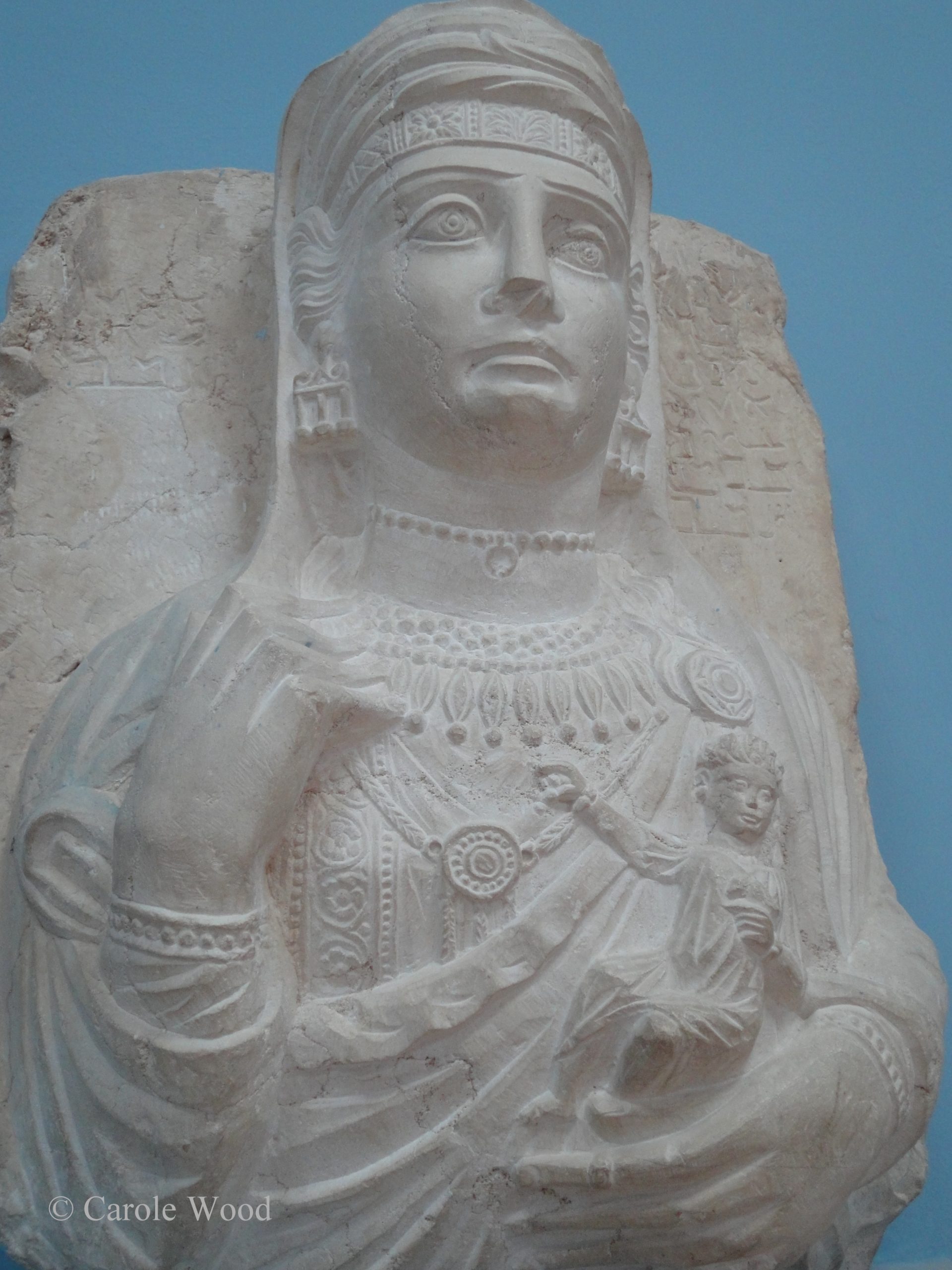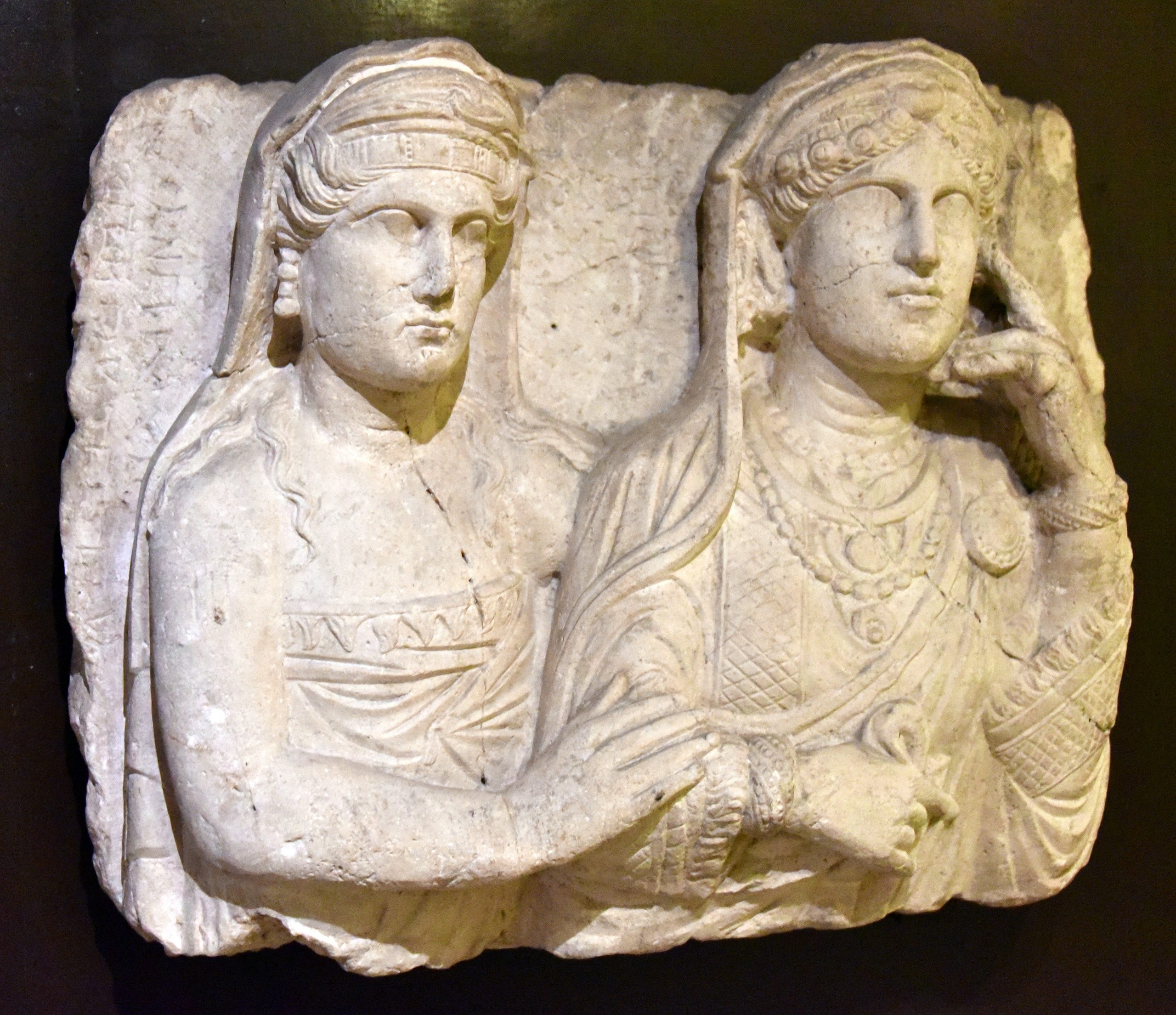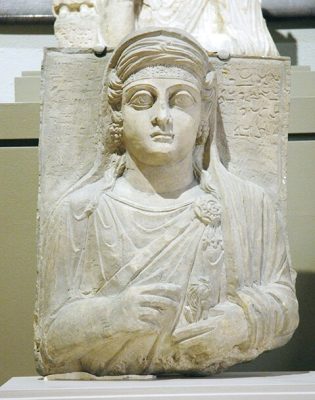
“Ambai: The Story Behind Ancient Palmyrene Funerary Reliefs”
https://explore.berkshiremuseum.org/digital-archive/whats-in-the-basement/ambai
“This is a funerary relief bust of a woman in white-grey limestone that was made in the 2nd century CE in Palmyra, in modern Syria. The slab is roughly 21” tall and 15” wide. An antiquity, relief busts like this one were created to cover burial niches and tombs as a memorial to the deceased. The details on the relief hint at the woman’s lifestyle and personality. She wears a long-sleeved tunic under a stola, or cloak, that is pinned with an intricate broach, known as a fibula on her left shoulder. On her forehead she wears a patterned headband diadem, worn so her thick wavy hair frames her face. A diaphanous veil sits atop her head and falls over her shoulders. She holds domestic tools in her left hand including a spindle and distaff, which are some of the most common symbols associated with earlier Palmyrene funerary statues of women. There is an inscription in Aramaic carved behind the portrait relief. It was translated into English in the 1920s by an expert, Harold Ingholt, who determined her name was Ambai.”
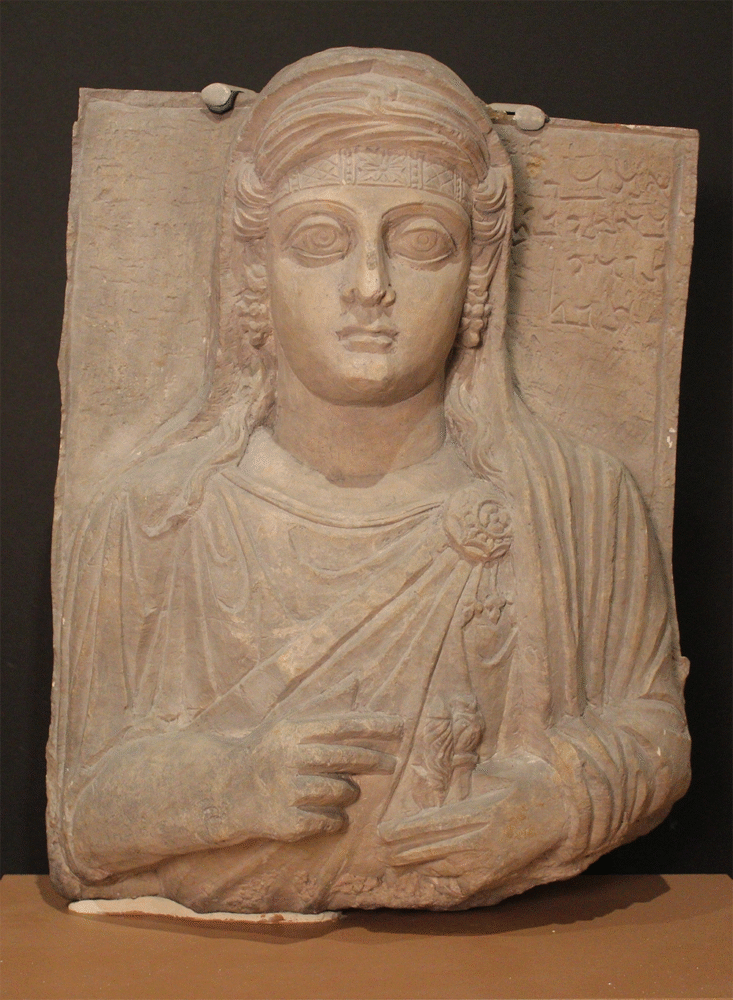



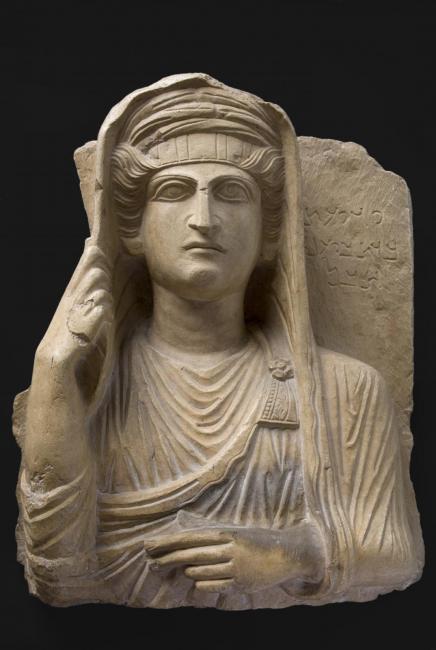
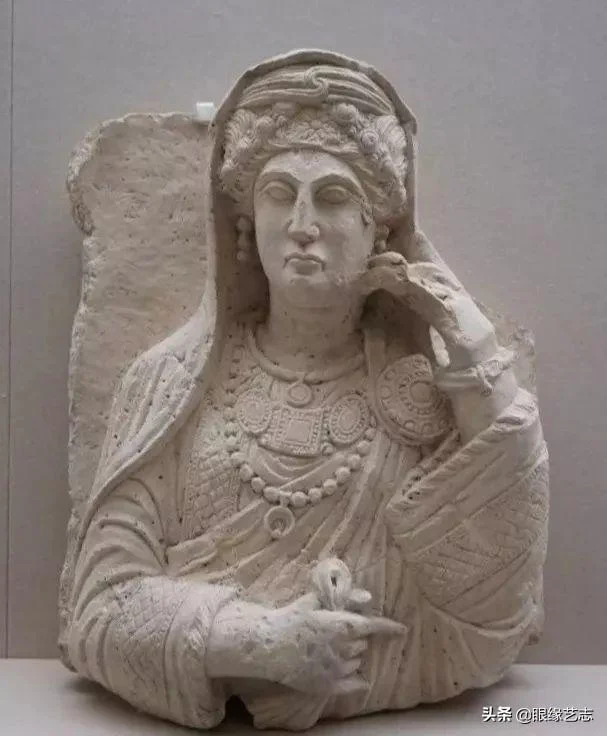
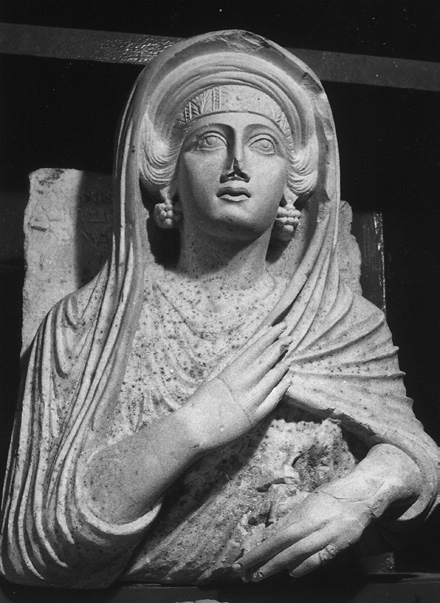
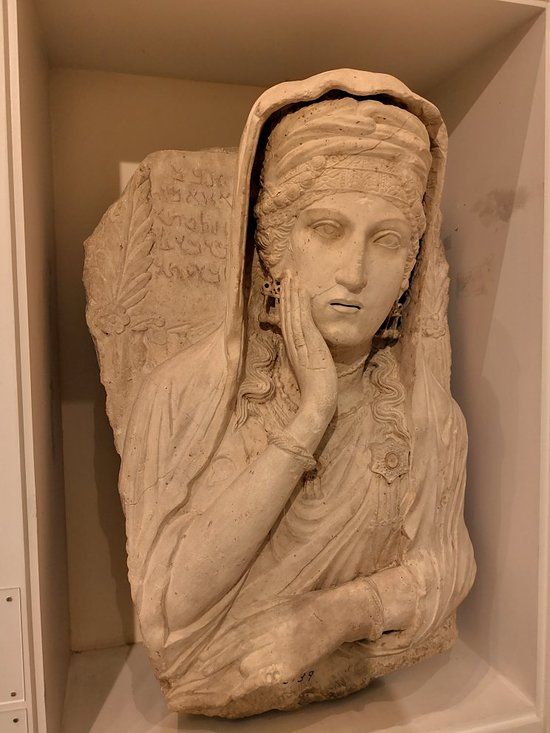
![Relief of a woman, Palmyra [Berkshire Museum]](https://colorsandstones.eu/wp-content/uploads/2022/05/AZTLAF434ZUSPG85-M-h1380-fedea.jpg)



